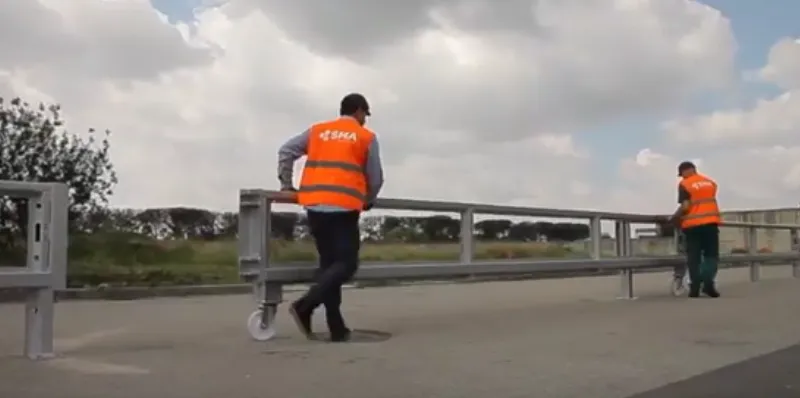
SMA Road Safety says the gate in its latest Stargate Emergency Access system is not anchored to the ground, allowing for easy and fast removal.
The 6m-long gate is the middle module of the three-module system. Adjacent modules, also 6m long, are bolted onto a specially designed sunken anchor rail. This means the anchored modules are correctly positioned and no measuring is required.
A special adjustable connection section at either end of both anchored modules allows for safe attachment to the adjoining concrete barrier. This connection section can be adjusted to fill a gap up to around 100mm between the module and concrete barrier.
When installed, the height of the barrier is 1,005mm and width is 170mm. All the modules, anchoring rail and barrier connecting units are delivered preassembled for fast and precise completion of installation.
When installed, the gate can be removed by two people in less than 30 seconds – no special tools required, says the Italian manufacturer. Each person simply lifts joining connecting pegs at each end of the gate which has integrated wheels. The gate can be quickly wheeled away to rest alongside either adjoining anchored support module. Importantly, the gate has integrated hooks that allow it to be securely slipped onto the adjoining anchored section to keep it safely out of the way.
Stargate has been tested with direct connection to ANAS NDBA concrete barrier. Properly developed and supplied by SMA, the connection allows a perfect adaptation to the concrete barrier and guarantees zero risk in case of impact.
The system has been crash tested according to the EN 1317-4 standard, with a connection to an H4b concrete barrier. SMA’s Stargate also has the CE Mark.










